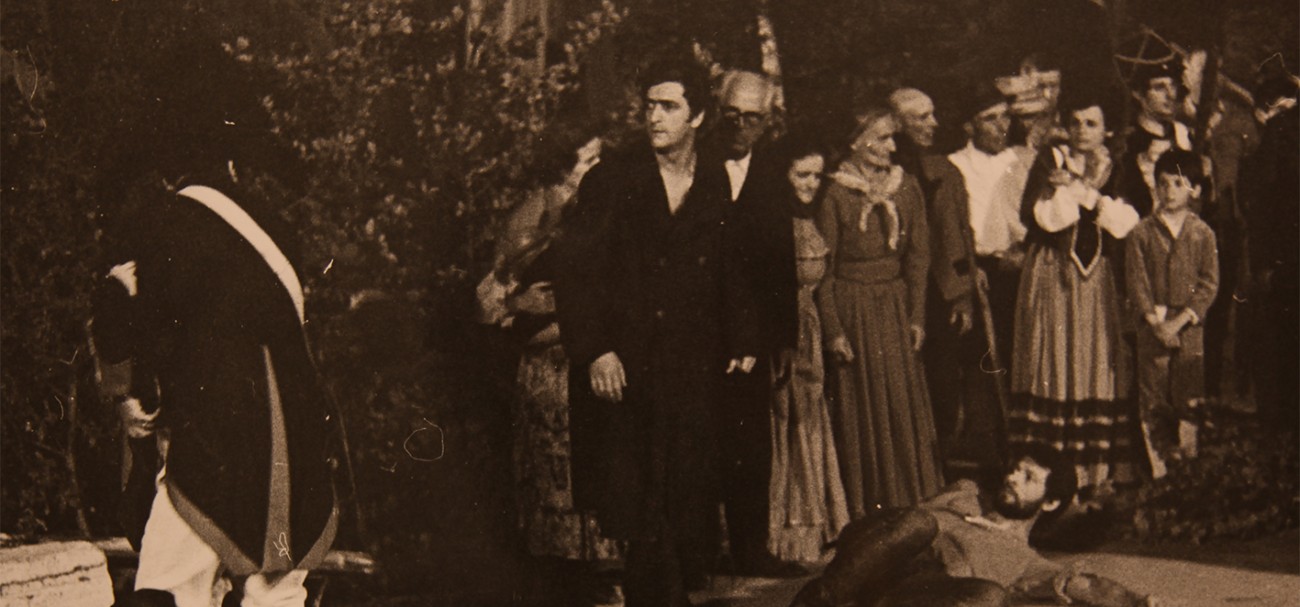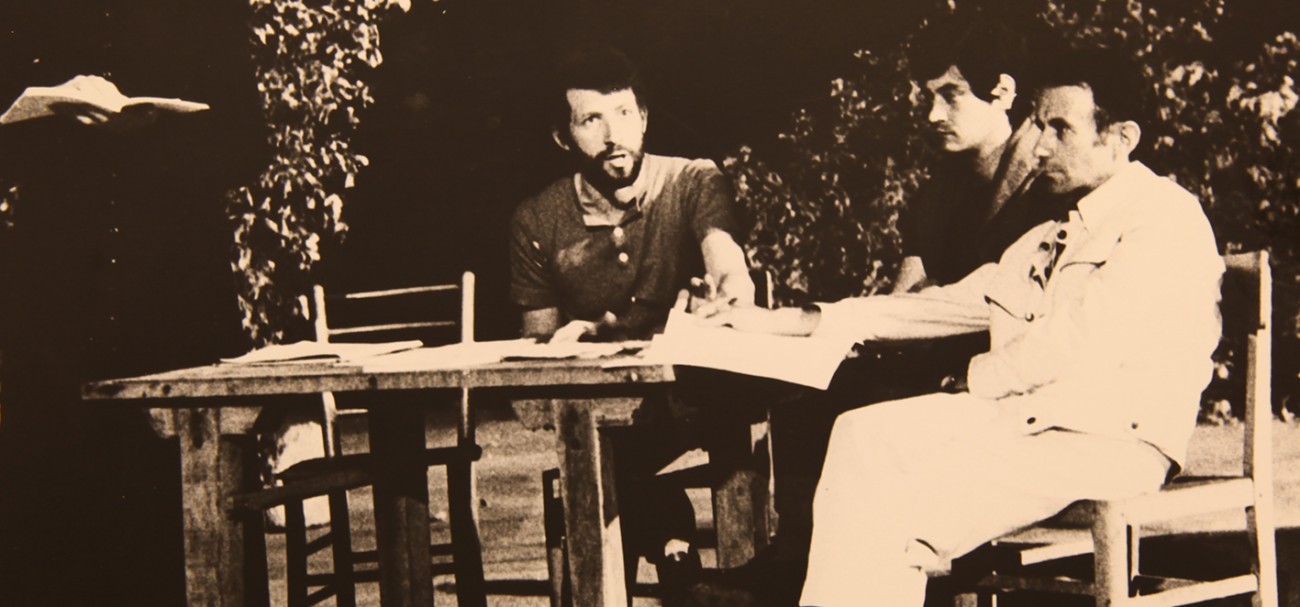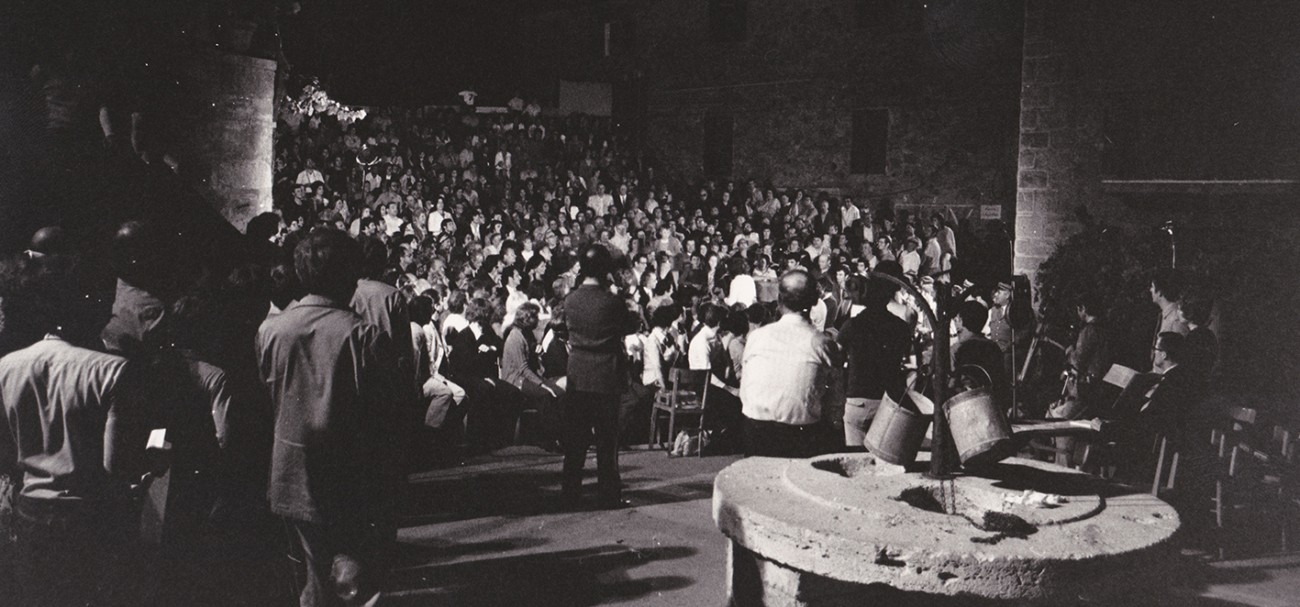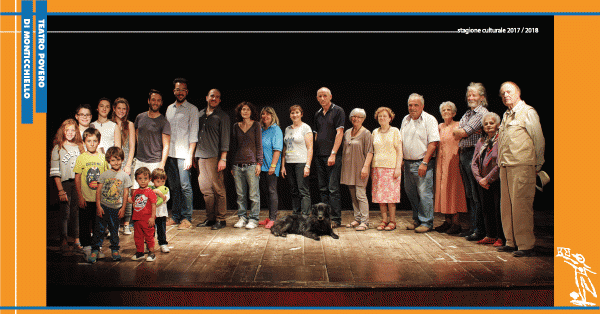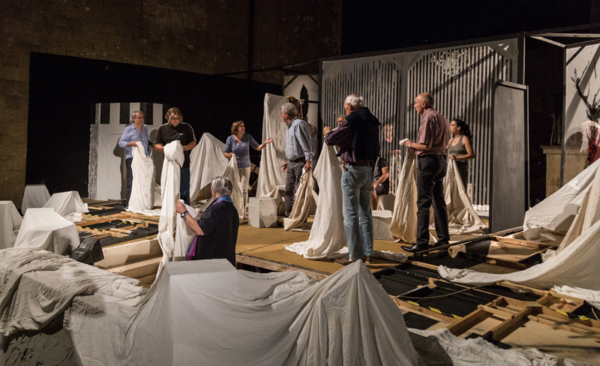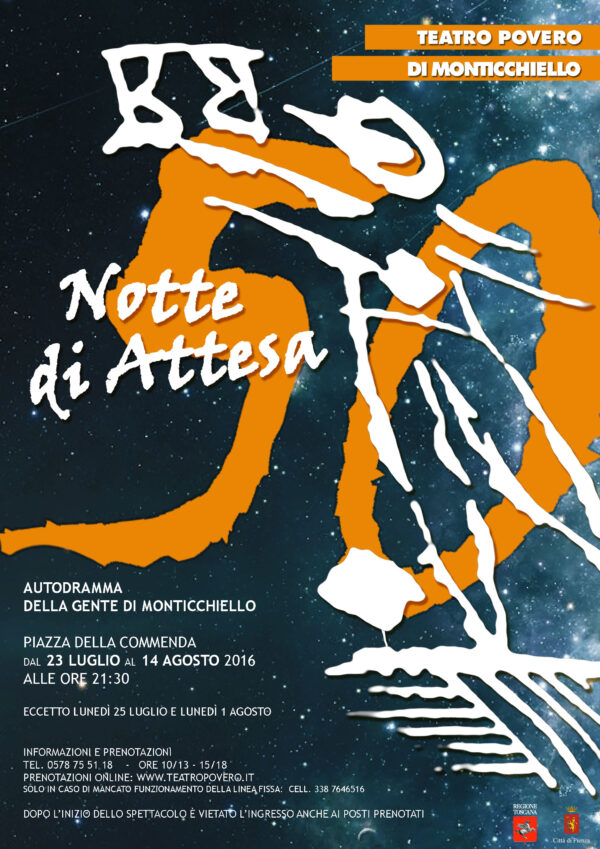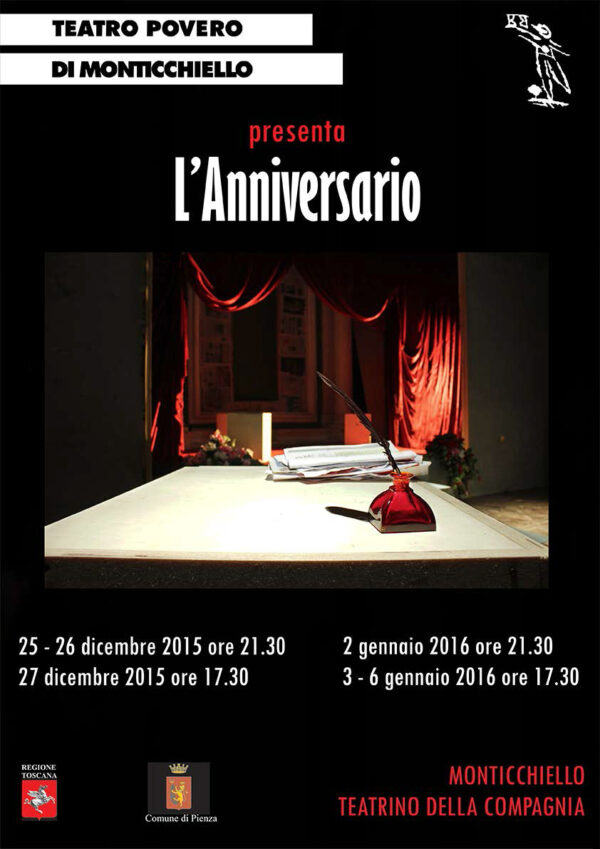This play examined another historical character, Baldassare Audibert, who lived during a period stretching from the end of the eighteenth century to the Unity of Italy.
In 1799 the army of Napoleon entered Italy, initially inspiring amongst ordinary people hopes of liberation from tyranny which were then thoroughly disappointed.
A regiment, or smaller detachment, was stationed in Monticchiello. Audibert—who was in command of it, and originated from Provence—discarded his rifle and began to preach against violence and against war. He planted numbers of crucifixes across a broad area of Italy, reaching from upper Lazio to Umbria and northern Tuscany. He became known as “the Crucifix man”; and although initally regarded with suspicion by the church and by governments, he was eventually respected and supported. He is buried at Rigutino in the province of Arezzo.
The autodramma narrated the passage of the French troops, Baldassarre’s personal crisis and his preaching. It concluded with a dramatic debate on questions of non-violent protest and conscientious objection: the points of reference were not doctrinal premises but the real circumstances and opinions of Monticchiello, relating both the past and the imagined future.


